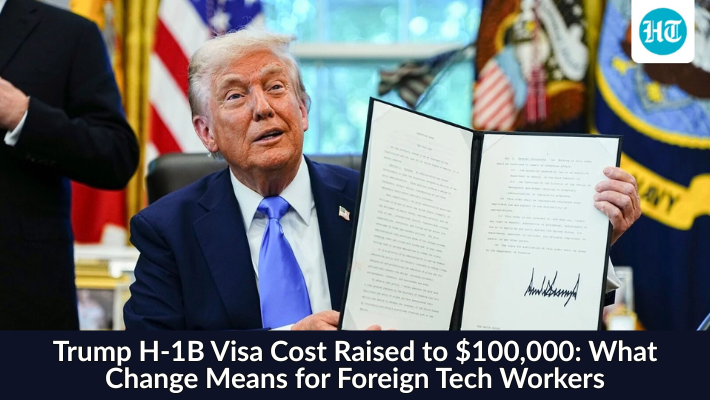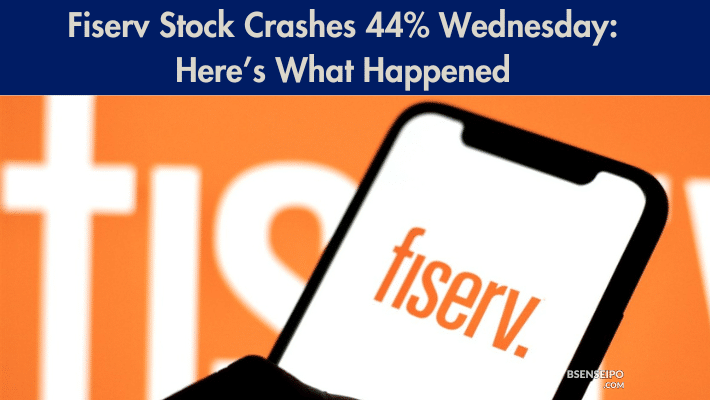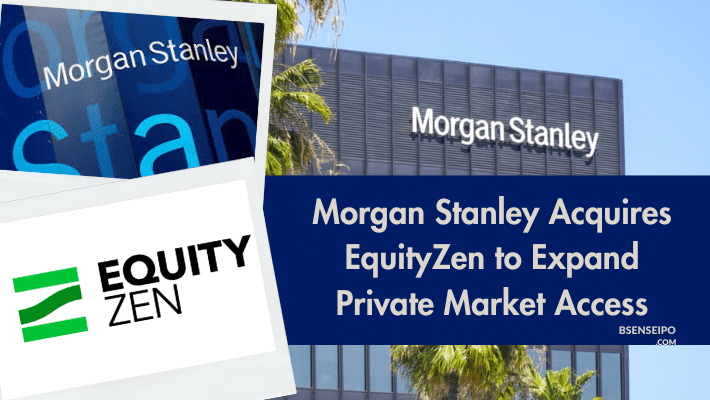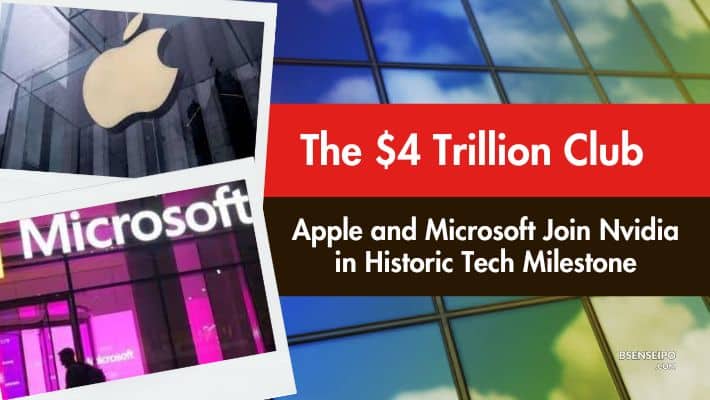Trump H-1B Visa Cost Raised to $100,000: What Change Means for Foreign Tech Workers
Trump H-1B Visa Cost Raised to $100,000: What Change Means for Foreign Tech Workers. Donald Trump signed a proclamation imposing a $100,000 annual fee on H-1B visas, dramatically increasing the current costs of $1,700–$4,500. This article explains what changes are, why it’s being done, how it affect tech companies, and the global implications.
What Is the Update?
A seismic shift in U.S. high-skilled immigration: under Trump’s executive order, H-1B visa applicants now face a $100,000 annual fee—up from a few thousand—reshaping who can work in U.S. tech and beyond.
- On September 19, 2025, President Donald Trump signed a proclamation that imposes a $100,000 annual fee on H-1B visa applications (and renewals) for companies petitioning foreign specialized workers.
- The fee applies to H-1B visas for “specialty occupations” (e.g. tech, engineering) under the non-immigrant status. Employers must submit petitions with this payment or be subject to restrictions.
Before vs After: Cost Comparison
| Element | Before (Current / Recent Cost) | After (New Fee Regime) |
|---|---|---|
| Existing Filing & Application Fees | Between $1,700 and $4,500 (includes employer-paid filing & registration fees, premium processing, etc.) | A flat or additional $100,000 annual fee per H-1B visa petition. This is a massive hike—~22- to 60-plus-times current fees. |
| Who Pays | Mostly employers, with certain fees borne by employee depending on visa/consulate etc. | Employers will be responsible for submitting the $100,000 alongside or as part of the petition; possible carryover effect to salaries, hiring practices. |
| Application Renewal / Extensions | Renewals/extensions involve the same or similar fees as initial petitions (plus premium processing if used). | Under the new rule, renewals or any petition would also likely require the $100,000 fee annually. |
Why This Move: Trump’s Motive
- Prioritize U.S. Workers: The administration states that the hike is intended to reduce reliance on foreign skilled labor and encourage companies to train and hire American workers.
- Reduce Abuse / Exploitation: Officials argue that some companies use the H-1B program to hire workers at lower wages, undercutting U.S. wages. This fee is pitched as a way to restrict that.
- Revenue / Policy Leverage: The high fee acts as both a revenue generator and a tool to reshape immigration by making H-1B visas a more expensive resource, possibly only viable for high value, high salary positions.
- Political Messaging: Fits into a broader “immigration clampdown” policy theme by Trump’s administration. Appeals to constituents concerned about outsourcing, foreign labor, competition for jobs.
Cost Right Now & How It Works
- Current Fees: Approximately $1,700 to $4,500, depending on company size, whether premium processing is used, and other employer vs employee borne costs.
- What the New Order Says: The proclamation states that for a petition to be accepted (including from abroad), the $100,000 payment must accompany or supplement H-1B petitions. This dollar amount is to be paid by employers. It also includes guidance for enforcement, audits, and penalties if unpaid.
- Effective dates: The order came into effect very quickly (with companies advised to act before certain cut-off dates). Companies like JPMorgan told H-1B employees abroad to return before September 21, 2025 to avoid being affected.
Global Country Impacts & Who Is Most Affected
- India and China: The Largest number of H-1B beneficiaries come from India (majority) and China. These fee hikes will disproportionately impact Indian tech workers.
- Tech Companies / Startups: Companies relying on foreign skilled talent (tech, STEM) may find costs prohibitive, possibly reducing hiring, relocating work, or increasing automation. Smaller firms will face more strain.
- Global Talent Migration: Skilled workers may prefer alternate destinations (Canada, Australia, Europe), reducing U.S. competitiveness in attracting global talent.
- Skilled Immigration Policy Trends: Could inspire similar fee hikes elsewhere, or strengthen points-based immigration systems globally.
Risks, Criticism & Legal Questions
- Legality: Some legal experts argue executive branch lacks authority to impose such high fees without congressional backing. The fee might be challenged in courts.
- Innovation / Talent Loss: Companies warn this could drive skilled workers away, hamper innovation, especially in fast-growing fields like AI.
- Equity and Access: The policy may favor wealthy corporations that can absorb costs, disadvantaging smaller entities, early-career workers, or workers from less affluent backgrounds.
Conclusion
Trump’s policy to hike the H-1B fee to $100,000 annually is one of the most dramatic shifts in U.S. immigration policy in decades. It drastically increases costs—from thousands to six-figures—for companies sponsoring foreign skilled workers. The motive is clear: protect U.S. jobs, reduce perceived abuses, and reshape legal immigration. But the cost is high—not just in dollars but in global talent, innovation, and opportunity. How this plays out legally, economically, and socially remains to be seen.




